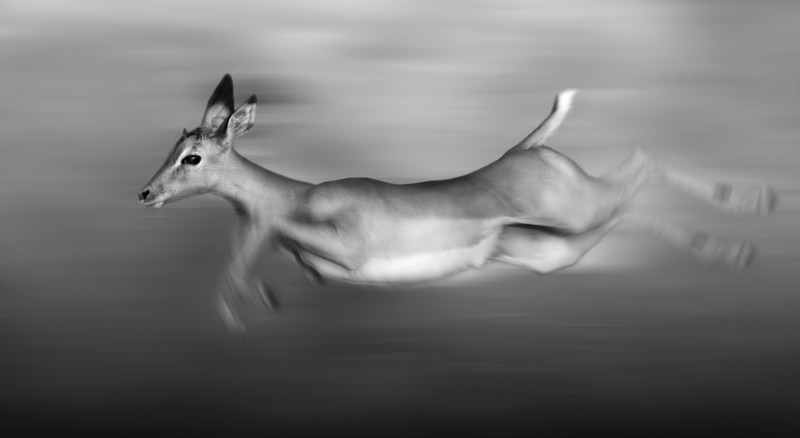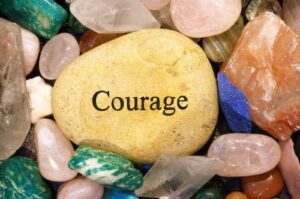The Body and Trauma: From Frozen to Fully Living
An Impala and A Cheetah
Imagine yourself as an impala grazing along a lush plain. You hear rustling in a nearby brush. Your body tenses and your senses become alert. You see nothing and then suddenly, out of the brush, a cheetah lunges. You begin running as fast as possible, about seventy miles per hour. The cheetah begins closing in. Finally, he pounces and makes contact. Your body freezes. You collapse and appear immobile, though on the inside, energy is coursing through your body still at seventy miles per hour (adapted from Levine, 1997).
After an overwhelming situation has occurred, it is not uncommon for our bodies to react as though the stress is still present – feeling agitated, shaky, breathing heavily, etc. In most circumstances, our bodies are able to relax and return to a normal state after a relatively brief period of time. Unfortunately, this is often not the case for people who have endured trauma.
The Experience of Trauma
While traumatic experiences vary along a wide spectrum, a common thread can be found in its expression. Experiencing fight, flight or freeze responses are our bodies natural and good reactions to stressful and scary circumstances. However, for some of those who have experienced trauma, the brain keeps telling the body to escape a threat that no longer exists (Van Der Kolk, 2014). Many people who have experienced trauma live as though they have been imprisoned by fear and are unable to re-engage in present life (Levine, 1997).
In his book, Waking the Tiger, Levine describes post-traumatic stress disorder as, “incomplete physiological responses suspended in fear.” Going back to your experience as an impala, your body froze when the cheetah finally pounced. Yet, there was heightened energy from the terrifying chase that remained stuck inside your immobile body. A similar thing happens for those who have post-traumatic stress disorder. The body remains hypervigilant, prepared to be assaulted or violated again, and the survivor’s energy now becomes focused on suppressing this inner chaos (Van Der Kolk, 2014). This suppression has been shown to take a toll on the body and can lead to fibromyalgia, chronic fatigue and autoimmune disorders (Van Der Kolk, 2014).
Healing the Body, Mind and Spirit
In order to experience healing, the body needs to learn that the danger has passed and begin living fully in the present (Van Der Kolk, 2014). It is not enough to tell and re-tell the story of the trauma. Change needs to happen at the physical level as well (Van der Kolk, 2014). According to Levine (1997), trauma survivors need to pass through the state of immobility and liberate the suppressed energy.
Reconnecting mind, body and spirit is an important step to recovering from trauma. “Trauma robs you of the feeling that you are in charge of yourself…. The challenge of recovery is to reestablish ownership of your body and your mind – of yourself” (Van Der Kolk, 2014).
A Few Exercises
The following exercise by Peter Levine (1997) is to welcome your mind and spirit back to your body:
For ten minutes each day, take a gentle, pulsing shower in the following way: at a cool or slightly warm temperature setting, expose your entire body to the pulsing water, one part at a time.
Put your full awareness into the region of your body where the rhythmical stimulation is focused. Let your consciousness move to each part of your body as you rotate. Hold the backs of your hands to the shower head; then the palms and wrists; then both sides of your face, shoulders, underarms, etc. Be sure to include every part of your body. Pay attention to the sensation in each area, even if it feels blank, numb, or painful. While you are doing this say, “This is my head. This is my neck. This is my hand.” etc. “I welcome you back.”
Below is an exercise by Levine (1997) designed to begin accessing the body’s natural wisdom:
As you read this, make yourself as comfortable as possible. Feel the way your body makes contact with the surface that is supporting you.
Sense into your skin and notice the way your clothes feel.
Sense underneath your skin – what sensations are there?
Now, gently remembering these sensations, how do you know that you feel comfortable?
What physical sensations contribute to the overall feeling of comfort?
Does becoming more aware of these sensations make you feel more or less comfortable?
Does this change over time?
Sit for a moment and enjoy the felt sense of feeling comfortable!
Using these exercises can help you to become more grounded and connected to your body.
For other body-oriented therapeutic trauma treatments, read this blog from our archives. At Fuller Life Family Therapy, we offer trauma-informed care to help you move from frozen in a traumatic past to living fully in the present.
Resources
https://fullerlifefamilytherapy.org/yoga-and-trauma/
Levine, P. (1997). Waking the Tiger.
Van der Kolk, B. (2014). The Body Keeps the Score.
Contributed by
Supervised by Amy Fuller, PhD, LMFT-S


 Tamara Tatum, LMFT-Associate
Tamara Tatum, LMFT-Associate






